Dianne E. Butts's Blog: Dianne E. Butts' Blog, page 6
March 22, 2014
Visit the new Bible Prophecies Fulfilled blog
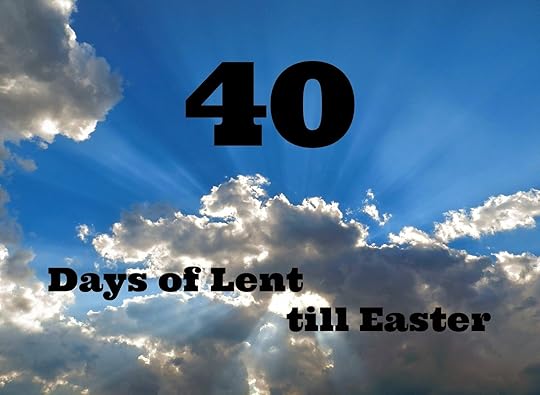 Thanks to Morguefile.com
Thanks to Morguefile.com and PicMonkey.comI started a new blog called Bible Prophecies Fulfilled so I could write more on the topic of my "Prophecies Fulfilled" series of books, and it has kept me so busy I haven't had time to post a note about it here!
I've wanted to start a blog on this topic for a long time, but just hesitated to take the plunge. Do I really need another blog to keep up with?
But I decided to do it. There's a lot going on in our world, and lot of interesting, possibly prophecy-fulfilling events coming in our near future--such as the first of four total lunar eclipses falling on major Jewish Feast days coming April 15th. It simply seemed too important to let it go.
So I started the blog with a Countdown to Easter. That's what that picture up there is about--you'll see that number count down through all the posts through Lent to Easter. I'm posting each day of Lent, which is every day except Sundays, about one prophecy that was fulfilled in the death and resurrection of Jesus. Seeing what God has predicted in the past, then seeing how each prophecy was perfectly fulfilled, gives us confidence that God knows exactly what's happening on the earth and is in complete control. Seeing these past prophecies fulfilled gives us stronger faith for our current times as well as our future. And glimpsing how prophecies were fulfilled in the past ignites our desire to know what prophecies have yet to be fulfilled (which we'll begin looking at after Easter) and gives us solid belief they will indeed be fulfilled.
I hope you'll stop by and enjoy the new blog at BiblePropheciesFulfilled.blogspot.com and let it help you prepare your heart for Easter. And will you please spread the word and invite your friends to join us on this journey? Someone you know wishes they knew this information.
If you've noticed things going on in the world and wondered what it all means, you won't want to miss this blog. What's going on in the world and what it means is exactly what we're going to be talking about there.
Please notice if you want to receive each post via e-mail, there's a sign up box in the upper right of www.BiblePropheciesFulfilled.blogspot.com.
Here is a list of the posts that have gone up so far with links to each post:
Day 25: March 22, 2014 - Jesus Your ScapegoatDay 26: March 21, 2014 - All the people answered, “Let his blood be on us…!”Day 27: March 20, 2014 - They Hate Him Without ReasonDay 28: March 19, 2014 - The Prophecy in the Crown of ThornsDay 29: March 18, 2014 - Destroy This Temple and I Will Raise It Again in Three DaysDay 30: March 17, 2014 - It's Not Blasphemy If It's TrueDay 31: March 15, 2014 - Caiaphas Speaks Truth: It is Better for One Man to Die Than a Whole Nation PerishDay 32: March 14, 2014 - Jesus Predicted that Peter Would Deny HimDay 33: March 13, 2014 - Strike the Shepherd and the Flock will be ScatteredDay 34: March 12, 2014 - Jesus' Prophecy of Judas' Betrayal Comes TrueDay 35: March 11, 2014 - The Prophecy in Thirty Silver CoinsDay 36: March 10, 2014 - Jesus Tells Us Before It Happens So We Will Believe His is GodDay 37: March 8, 2014 - Jesus Prophesied He Would Go Just As It Was Written About HimDay 38: March 7, 2014 - Riding into Jerusalem on a Donkey Fulfilled ProphecyDay 39: March 6, 2014 - The Prophecy in the Song as Jesus Rode into JerusalemDay 40: March 5, 2014 - Jesus Predicted His Own Death Three TimesDay before Ash Wednesday: March 4, 2014: Welcome to Shrove TuesdayMonday, March 3, 2014: 40 Days of Lent is coming...Countdown to Easter!Sunday, March 2, 2014 - Prophecy Geeks, Prophecies Fulfilled, and Prophecies Yet to be FulfilledI'll look forward to having you on this interesting journey with me. Please leave me a note on the Bible Prophecies Fulfilled blog so I'll know you're with me. And please use the share buttons below this post and on the other blog to share with your contacts. Thanks!
Published on March 22, 2014 16:00
March 1, 2014
Should I Find a Publisher for My Book On My Own? Or Should I Find an Agent?
 Morguefile.comHere’s a question I’m often asked by writers, whether they want to write a book or have already written one:
Morguefile.comHere’s a question I’m often asked by writers, whether they want to write a book or have already written one:"Should I try to find a publisher for my book on my own first, and work directly with them? Or should I find a literary agent to represent me?"My recommendation is that you work toward both. Simultaneously.
Years ago book authors were supposed to query or submit to one book publisher at a time. Simultaneous submissions (approaching more than one publisher at a time) were pointedly discouraged.
The same rule kind of held true for approaching agents, I think.
However the thing is, if we approach one publisher or agent and wait for six months...or twelve months...or longer to hear a "no thank you" (they are not interested in our book project), and then approach another publisher or agent and wait a year... Well, it could take years to find the one publisher or agent who is interested.
Let me note that today it seems many agents and publishers respond more quickly -- at least their guidelines say they do. They often say they respond in three months, or that after that time if we haven't heard from them they are not interested. My experience in the real world, at least the world that used to be, they often took longer than what they said it would to actually make a decision. The "if you don't hear from us by a certain time, we're not interested" is a somewhat new practice that started in recent years simply because agents and publishers have so many writers querying them that keeping up with responding to every query has become too much.
I think I can speak for most authors when I say we’d prefer not to be published posthumously. (Tweet that!)
So for myself, after years of querying or submitting proposals to publishing houses and agents one at a time, I realized there's no reason to not approach both. Simultaneously.
Furthermore, we can now approach multiple publishers and agents simultaneously. The industry is much more accepting of that now than it used to be. This is what I recommend you do.
So which is better to land first: a publisher or an agent? Either!
If you find a publisher who is interested, it might help you land an agent to negotiate that contract for you. If you land an agent first, their job is then to help you land a publisher.
So how do you go about doing this? To approach agents and publishers about your book, you need three things:
a list of agents and publishers you want to approacha query lettera book proposal
Let’s talk about creating your dream list of publishers and agents you want to approach. Then next month we’ll talk about how to approach them through query letters and book proposals.
Special note: If you are writing a Christian book—whether for a “Christian” audience or for an audience which might not be Christian but your book contains the Christian faith, then you need to look for a Christian publisher. (Yes, even if you want your book to reach beyond Christian publishing and into the secular market. It is still only a Christian publisher who will be interested in publishing that type of book.)
First things first. How are you going to find book publishers and agents to submit to?
I suggest you try traditional publishers first. But here's where I want to ask you to be really careful.
The problem here is that it is harder and harder for writers to figure out which publishers are truly traditional publishers.
When I talk about self-publishing companies that are not "traditional" publishers, I'm talking about companies like:
Author HouseiUniverseXlibrisOutskirts PressTrafford PublishingDog Ear PublishingXulon Press
I'm not saying there's anything wrong with these publishers, nor am I recommending any of them. I'm just telling you these are not traditional publishers. If you want to self-publish your book, you need to check each one out for yourself and understand what you're getting into. Here's a directory of self-publishing companies from Writer's Digest.
My January blog post describes different types of publishers and how to tell the difference. If you haven't read it yet, you can read it here: What You Need to Know about Book Publishers BEFORE Publishing Your Book. Some of the information listed below might be repetitive from that post.
So if you're trying to interest a traditional publisher in your book project, many of them will require you to submit through an agent. Some, however, still accept queries and proposals directly from authors. But before you can submit anything, first you must find who to submit to. So the question is, how do you figure out who you want to submit to? Here are three ways:
Find Publishers and Agents in a Market Guide
If you have a budget to invest a little, you can buy a market guide or borrow one from the library.
If you are writing for the general market, there is the annual 2014 Writer's Digest Market Guide.
If you are writing for Christian readers and looking for a Christian publisher, there is the 2014 Christian Writer's Market Guide.
Each is updated every year. You can buy them on Amazon. These books list many of the Christian agents and publishers along with their contact information, web sites, what they’re looking for, and oodles of more information.
Be aware, however, that besides listing traditional publishing companies, these books also list self-publishing companies and co-publishing companies. So just because it's listed in one of these books doesn't mean it's a traditional publisher.
Find Traditional Publishers by Visiting a Bookstore
Secondly, find publishers by visiting a large, chain bookstore and/or your local Christian bookstore (not an online bookstore, because online stores carry everything, not necessary only the traditional publishers). As a general rule, the brick-and-mortar stores carry only the "big" traditional publishers because shelf space is at a premium.
Check out the shelf where your book would be shelved. Find books that are similar to yours. Write down the classification of those books, the genre they are listed as. Look for this above the bar code on the back.
Look for books with similar styles, tones, topics, etc. Look for books that seem like that publisher would also be interested in yours. Then write down the title, author, and who published it.
You can also check the “Acknowledgements” section of the book, the preface, or “About the Author” and see if the author listed the name of their agent.
Make a list. If you want a traditional publisher, this is probably your top, most desirable, publishers to approach. Possibly you've also found some agents to check out also.
Find Publishers and Agents at a Writer’s Conference
Thirdly, if you have more in your budget to invest, you can attend a writer’s conference. For Christian authors, I highly recommend attending the Colorado Christian Writer's Conference in May.
At a writer’s conference you can take workshops, meet publishers and agents in person (very valuable), as well as mingle with, network, and make connections with other writers and authors who are also working their way through the publishing maze.
Get hooked in to the "system." Get to know how the publishing industry works. Make contacts. Network. Find other authors you network with. Form a team so you can help and encourage each other.
So your homework for this month is to follow these instructions to create your dream list of publishers and authors. Have that done by next month and then we’ll talk about what to do with your list and how to approach these publishers and agents.
~ * ~
If you haven't heard, my first e-book for writers in my new "Getting Published" series is now available exclusively on Kindle! You can find it here:
How to Get Published by Magazine & Book PublishersFind markets, Submit Your Manuscripts, and More
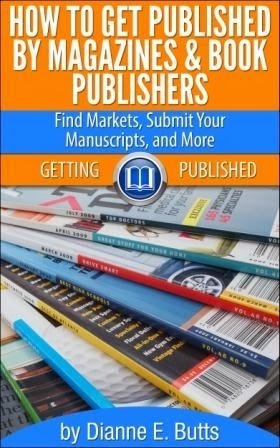
$2.99 Exclusively on Kindle
Published on March 01, 2014 09:35
February 11, 2014
President's Day sale! Dear America book
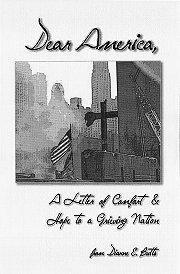 Dear America
Dear AmericaA Letter of Comfort and Hope
to a Grieving NationStarting tomorrow, Wednesday February 12th, the Kindle edition of my first book, Dear America , will go on sale for one week to celebrate President's Day.
In the United States, we celebrate President's Day on Monday, February 17, 2014, to commemorate the birthdays of both George Washington, the first president of the United States, whose actual birthday is February 22nd, and Abraham Lincoln, who signed the document that ended slavery in the United States, whose actual birthday is February 12th.
On this patriotic day, I'm celebrating by offering Dear America: A Letter of Comfort and Hope to a Grieving Nation at a discounted price.
I wrote Dear America in the days and first few weeks following the terrorist attacks of September 11, 2001. The book was published in print by Ampelos Press six months later on March 11, 2002. The Kindle edition released on its tenth anniversary, in 2012.
While the events of September 11th inspired the book, the information in it is timeless. In Dear America, you'll find:
10 Things I've Learned About Grief: practical thoughts and information to help you or a friend through the loss of a loved one.An intriguing Q & A section answering such questions as "Do Muslims and Christians worship the same God?" and "How can we know if Christianity is true?"Ten practical tips to help beginners start reading and understanding the Bible.A fascinating presentation of the Bible in only five acts!
Dear America will be on sale:
Tuesday, February 12, through Saturday, February 15, for only $ .99!Then on Sunday, February 16, through Tuesday, February 18, for $1.99.
Don't have a Kindle? No problem. Your computer, tablet, or phone can be your Kindle reader with a download of a free app from Amazon. Find links to Kindle apps here.
I hope you'll grab your copy of Dear America this week and share this sale info with a friend who may also benefit from it. This small book has been called "inspiring," "practical," and "uplifting." If you find it so, please leave a note as a review on Amazon to let others know. Thank you.
Please use the Twitter, Facebook, Google+, and Pinterest buttons below to share. You never know who may need this book ... today. Thank you.
And my God bless America.
Published on February 11, 2014 14:00
February 8, 2014
New "How to Get Published by Magazines & Book Publishers" E-Book Released
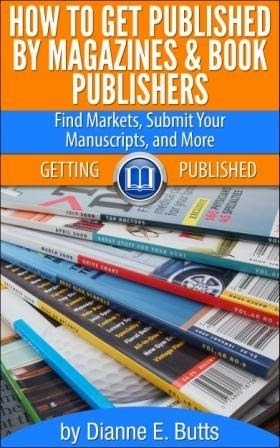 How to Get Published by
How to Get Published byMagazine and Book Publishers e-bookI'm very pleased to announce the first title in my new "Getting Published" E-Book series has released and is now available!
How to Get Published by Magazines and Book PublishersFind Markets, Submit Your Manuscripts, and More
You will find it exclusively for Kindle at Amazon.com.
Don't have a Kindle? No problem. Your computer, tablet, or phone can become a Kindle reader if you download the free app from Amazon. You can find links to do that here: No Kindle? No problem!
If you've been to a writer's conference where I attended or was on faculty, you may have seen my "Help for Writers" series of printed pamphlets. I created that series of five pamphlets back in 2003 and they have proved quite popular at writer's conferences. They sell for $3.95 each.
But while they've been available by ordering from me, getting the word out about them as well as taking and filling orders has been cumbersome. Now I'm re-releasing them as e-books to make them far more easily available to a much wider audience. So if you haven't seen the pamphlets, now is your chance to easily get the same material -- only revised and updated, with bonus content added -- as an e-book.
This first e-book is a revised and updated version of my pamphlet, "The Basics for Beginners: How to Find Markets, Submit your Manuscripts, and Keep Track of it All." I've also added more content from my one-day seminar, "Writing for Publication: How to Find Markets and Submit Your Work."
This new e-book includes three Bonus Articles not included in the original pamphlet:
How to Study the MarketBook Manuscript Submissions with the basics for both Fiction and nonfiction book proposalsWhich Rights Do I Sell When?
Besides creating e-books from each of the five "Help for Writers" pamphlets, I'm also developing additional e-books from workshops I've taught, articles I've written, columns from my former newsletter for writers, and blog posts from my "Butts About Writing" blog at www.ButtsAboutWriting.blogspot.com.
Topics from the "Help for Writers" pamphlets include how to write query letters and how to re-sell your magazine articles as reprints.
Topics from workshops will include my popular "10 Tools for Marketing Your Book," getting more articles out the door as a freelance writer, beginning screenwriting, how to shape your story to make a great screenplay, and more.
I hope these topics interest you! Whenever I have a new e-book ready to go, I'll announce it here. So please stop back by often. Or follow me on Twitter to catch announcements. Find me at @DianneEButts and @BAboutWriting.
If you or someone you know has always wanted to write to get published in magazines or wanted to write a book and get it published, this first e-book will tell you what you need to know to get started. Please let your wanna-be writer friends know! And be one of the first to get it by getting your own copy now!
How to Get Published by Magazines and Book PublishersFind Markets, Submit Your Manuscripts, and More
If you find this e-book valuable, please leave a comment below to let us know. And if possible, please leave a review or rating on Amazon so others will know you found it worthwhile and helpful. Thank you so very much.
Please tweet this Tweetable:
New e-book: How to Get #Published by Magazines and Book Publishers! Tweet this
[image error]
Published on February 08, 2014 02:00
February 1, 2014
How to Write and Get Published by Magazines and Book Publishers
 © Medaphoto | Dreamstime Stock Photos I have some news to share that I'm very excited about! Very soon I'm going to release the first in a series of new e-books.
© Medaphoto | Dreamstime Stock Photos I have some news to share that I'm very excited about! Very soon I'm going to release the first in a series of new e-books.(Update 2/7/2014: This e-book is now available!)
The title of the first e-book in my "Getting Published" series for writers is:
How to Get Published by Magazines & Book Publishers: Find Markets, Submit Your Manuscripts, and More
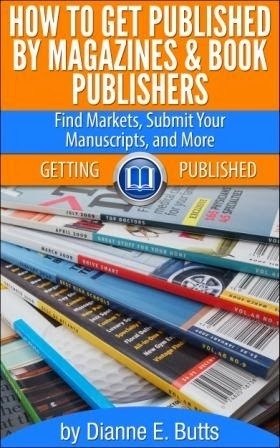 How to Get Published by
How to Get Published by Magazine & Book Publishers E-book
Last month I promised we'd talk about the basics of getting started in publishing whether you want to write for magazines or books. That information is below under the headline "The Basics of How to Get Published in Magazines and Books." It is excerpted from the new e-book. Between here and there is more information about my coming new series of e-books for writers. If you prefer to go straight to the "How do I get published?" information, please feel free to scroll down.
About My New "Getting Published" Series of E-Books
You may have noticed that sometimes in this blog I write on topics where I've learned something new and interesting and I think it will help you in your writing too (such as using social media like Twitter, Facebook, and Goodreads to promote our writing). Other times I post on topics that I've been asked over and over again in my twenty-five years in this business, One of the questions I get a lot is from people asking me how they can get started in writing for publication and get published by magazines and/or get their books published.
I always love to help someone else get started and I love to share what I've learned, but I find I'm giving out the same information repeatedly to one person at a time. Wouldn't it be great if I had some way to give people the information they're seeking without me having to go through it again and again? Wouldn't it be nice--and more efficient for me--to have a place to point people to where they would find all the information I have to offer already there waiting for them?
Through the years I've looked for, and have developed, ways to give the information. In 2003 I developed and wrote five pamphlets in my "Help for Writers" series that I printed on 8 1/2 x 11 inch paper, 8 to 12 pages each, and sold at writer's conferences for $3.95. Hopefully they are inexpensive enough that anyone who needed one could afford it. They have been, and continue to be, very good sellers and I've received many wonderful, positive comment from writers on how these pamphlets have helped them. While I intend to keep them available, I also intend to update and revise where needed since a more than a few things in publishing have changed in the past decade.
Also in 2003, I taught a one-day seminar a couple of times on "Writing for Publication." We recorded that presentation and I've sold that on cassette tapes bundled with the handouts.
I continue to offer the original five pamphlets and the taped seminar (though supplies of the seminar are limited). The titles are:
The Basics for Beginners: How to Find Markets, Submit your Manuscripts, and Keep Track of it All (c. 2003, $3.95)Conquering the Dreaded Query Letter: How to Write Query and Cover Letters (c. 2003, $3.95)How to Market Your Reprints (c. 2003, $3.95)How Do I "Show, Don’t Tell"? (c. 2003, $3.95)Should I Become a Writer? How Can I Decide? (c. 2003, $3.95)and the "Writing for Publication: How to Find Markets and Submit Your Work" taped seminar (c. 2003, $24.99) Making the New, Revised "Getting Published" Editions More Easily Available!
While these products have been wonderful to take to writer's conferences or wherever I teaching writing seminars, making them available to many more people has been more challenging. I can and do ship them upon request and payment through PayPal, but that process is cumbersome, as is the job of simply letting people know they are available. (I haven't done much of that lately, so you may not have even known about these products.)
There has to be a better way, right? Well there is. I am converting these pamphlets to e-books, and revising and updating them in the process. The first e-book will release very soon--just as soon as I have it and the new cover ready.
I'm very pleased that I'll be releasing not only these five pamphlets and the seminar in e-book form, but I also will make available several more products based on workshops I've taught and other writing I've done. Here's a glimpse of some of those topics:
tools for marketing your booksstrategies for how magazine writers can sell more articlesbeginning screenwriting, as well as shaping your story to work great as a movieI hope those topics excite you! Which would you like to see sooner rather than later? Leave me a comment and let me know.
I'm making these new products available as e-books for Amazon's Kindle, because that's the easiest, most cost-effective way for me to do this. Don't have a Kindle? No problem! Your PC, Mac, tablet, or smart phone can read Kindle books (Amazon's e-books) if you simply download a free ap. Please visit the page on this blog called "No Kindle? No Problem" for links to download what you need.
As with the forerunners of these e-books, my series of "Help for Writers" pamphlets, these new e-books will be inexpensive enough that hopefully anyone who needs them can afford them*. I also plan to put them on sale from time to time (as allowed and limited by Amazon), so do watch for that if you need even more of a break on the price. The pamphlet-length e-books will be priced as low as possible--mostly likely $2.99. The workshop-length e-books will be a bit more.
If you're not familiar with Amazon's Kindle pricing structure, the best opportunities for authors are when their e-books are priced between $2.99 - $9.99, so that is why most Kindle books fall within those prices. It is possible, though, to price e-books outside of those price points ($ .99 minimum), and so you'll see that for various reasons--even when the book is not on sale. Amazon also allows Kindle e-books to be put on sale or made available for free for a limited number of days per annual quarter.
When the e-books become available, if you get one it would help me immensely if you would consider leaving an honest review. Reviews let others know if the product is truly helpful, valuable, and worth their investment. Reviews can be short--even a couple of sentences will do. I thank you for that in advance.
(*If you need one of my e-books or printed pamphlets but cannot afford it, please contact me privately and we'll see what we can do.)
The Basics of How to Get Published in Magazines and Books
Last month I promised we would talk about the basics of getting started in publishing whether you want to write for magazines or books. Maybe you're far from a beginner. Then you probably get asked for help from beginners like I do. The next time you meet someone who wants to get started in publishing, now you can send them to this blog post for help in doing just that.
The following is excerpted and condensed from the first e-book I'll be releasing soon. For this first e-book, I revised and updated my "Help for Writers" pamphlet titled "The Basics for Beginners: How to Find Markets, Submit your Manuscripts, and Keep Track of it All." Besides updating it, I added information to that pamphlet by combining it with my taped seminar,"Writing for Publication: How to Find Markets and Submit Your Work."
How Do I Find Magazine, Book, and Online Publishers that Want My Work?
The main way professional writers find online outlets, magazine editors, and book publishers who want their stories, articles, novels and nonfiction books, is through a "market guide." In publishing, a "market" is a place where you can sell your writing, in other words a publisher that buys work from writers like you.
Two well-known market guides are:
the Writer's Market, published annually by Writer's Digest. This book mostly contains publishers in the general market, although it contains some markets that want Christian materialThe Christian Writer's Market Guide which contains markets that want Christian material.
These guides are like phone books containing all sorts of information for hundreds of publishers, such as all their contact information, editor's names, mailing and e-mailing addresses, and web sites. They also list important and valuable information about what the market publishes, who their audience is, whether they pay and if yes, how much.
You can buy a market guide or borrow one from your library. My advice is that your first task should be to find and read the "how to use this book" section these guides usually include. Otherwise much of the entries will be like trying to read code.
How to Know What Magazines and Book Publishers Want You to Send
After you find markets to submit your articles, stories, or books to, the next thing you will want to do is either visit the publisher's web site or contact them, if necessary, to obtain or request their "writer's guidelines." You can often find these online today.
Writer's guidelines are the instructions the publisher wants you to follow when you submit to them. If you want to get published, you need to get these before you send them anything, and then carefully follow their instructions. This is a step many writers skip, and then they wonder why their submissions are rejected. If you submit without reviewing and following the guidelines, you're probably not going to make any friends at the other end. This could brand you as amateur and cause you problems right off the bat. Professional writers do it the smart way: they get the guidelines first...and follow them.
You will also want to obtain "sample copies" for magazines and periodicals (regularly published papers) or "book catalogs" (now online) from book publishers. You'll want to study these materials carefully to determine if your material will fit the publisher. If your material currently doesn't fit, you can either tweak it to fit the publisher or find a different publisher. Never try to get a publisher to bend to fit what you're doing--that simply doesn't work. Send them only what they'll be interested in.
"Theme Lists" are editorial topics that will be covered in future issues of a magazine. When publications use a theme list, you should see if your piece of writing will fit a future theme and then let the editor know. This increases your chances of placing your writing in that publication. Another way to use theme lists is to see what themes they'll be covering and write something especially for that theme. While it doesn't guarantee the editor will purchase it, you've increases your chances and the editor will appreciate it!
Included in the e-book is more detailed information on theses topics as well as how to send for these materials whether by postal mail or e-mail, a sample request letter, tips to organize these materials, and more.
Here's a hint: As you obtain writer's guidelines, record the date on them. Occasionally editors changes these and you'll eventually end up with more than one copy in your file. You'll need to know which is the most recent.
How to Submit Your Manuscript
What you do next depends on how the publisher wants you to submit your manuscript. Some magazines allow you to submit your manuscript to them directly and at any time. Some magazine and other periodical publishers want you to send a “query letter” first.
A query letter is a one-page sales letter “selling” the editor on your article or book idea and asking for permission to submit the full article manuscript or book proposal. How to write a query letter, what to include, etc., is a detailed topic of its own. I have a helpful pamphlet on this topic with several example query letters. I'll be creating an e-book from that pamphlet in the future. Contact me for the printed pamphlet if you need that sooner.
If you are submitting your writing to a magazine or periodical publisher who works in print, here are some basic guidelines for formatting your manuscript:
Name, address, phone, e-mail in the upper left corner. (Don't include your SSN. Keep that secure. If they need it, they'll officially request it.)Rights* offered and number of words in the upper rightTitle, by, and name centered, each on their own line, about a half way down the first pageAbout two thirds of the way down the page begin your articleIndent paragraphs using the ruler at the top of your word processor (not the tab key and never, ever spaces)Double-space your submission from the title down. (This means set your line spacing to "2." Do not hit the enter key to skip a line.)If submitting a hard copy via postal mail, print on one side of white paper using black ink.When you open your word processor (such as Word), most likely you should just leave the margins, font, etc. alone. They are already set as they should be.On page 2 and beyond use a header to include the title of your article (or partial), your last name, and the page number. This way if your printed pages get separated someone can put it back together.The e-book gives tips on if you need to mail a hard copy of your manuscript, which is rarely done anymore, but sometimes that's what a publisher or literary agent wants.
If you're submitting to an online publication, basic differences from the above are:
Rights* offered and word count also go on the left side under your contact info. (Nothing in the upper right.)Title, byline, and all text are left justified (nothing centered).No indents for paragraphs. Use "block style" and insert an extra line between paragraphs instead of indenting. You can find additional helpful information in my April 2013 blog post 8 Tips for Formatting Your Manuscripts So Editors Will Love (Not Hate) You
If you want to submit a book manuscript to a book publisher or literary agent, you will most likely need to produce a "book proposal" first. A book proposals tells the publisher or agent all about your proposed book and allows them to decide if they want to see the whole manuscript. How to write a book proposal is a huge topic of it's own. My e-book gives the basic information for what to include in book proposals. For in-depth information, there are many other resources, both books on the topic and online, to teach you how to write a quality book proposal.
Which Rights to Sell When
*A layman's discussion of the Rights you sell to your magazine or periodical articles and stories, and when to sell which rights, is included as a Bonus Article in the e-book. Here's some basic information:
First rights means selling your piece to be printed for the first timeSecond or Reprint Right is selling a piece of writing that has been published at least once beforeOne-time Rights means just that, selling your piece for one-time use. This could be your First rights or Second/Reprint rights.Simultaneous Rights means selling your article to more than one publication at the same time.Know which rights you are selling and when to sell each type. In the e-book I go into when and how to use each of these types of rights to your best advantage as a writer.
Tracking Your Submissions
Once you start submitting your articles, stories, and even book proposals or manuscripts, it won't be long before you can't remember what you sent where and when. It's very important that you keep good records so you don't end up sending the same manuscript to the same editor, which really makes you look bad. So you need a good tracking system.
I use a double-entry system on index cards. For every manuscript that goes out, gets rejected, or gets accepted, I record that action in two places:
on an index card for that manuscripton an index card for that marketThis double entry system keeps everything I need to see what I've sent where at my fingertips. In the e-book you can see some sample mock-ups of my cards with details of how I use this system.
If you're looking to get started on your writing journey to getting published by magazine and book publishers, I hope this basic information in this blog post helps you get that solid start you're looking for. If you would like more details on each of these topics and much more, please check out my e-book, "How to Get Published by Magazines & Book Publishers: Find Markets, Submit Your Manuscripts, and More". (Now available on Amazon.com! Published February 7, 2014.)
Tweetables: @DianneEButts How to #Write and Get #Published by Magazines and #Book #Publishers http://ow.ly/tafYj Tweet this
@DianneEButts The Basics to Getting #Published - how to #write for #magazine and #book publishers http://ow.ly/tafYj Tweet this
Related ArticlesFrom April 2013: 8 Tips for Formatting Your Manuscripts So Editors Will Love (Not Hate) You
[image error]
Published on February 01, 2014 02:00
January 13, 2014
Deliver Me Book on sale for Sanctity of Human Life Sunday
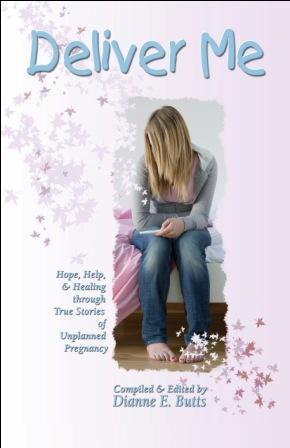 Deliver Me
Deliver MeHope, Help, and Healing through
True Stories of Unplanned PregnancySunday, January 19, 2014, is Sanctity of Human Life Sunday. Haven't heard of it? Let me explain.
On January 22, 1973, the United States Supreme Court handed down its decision on Roe vs. Wade which legalized abortion on demand in the United States. Since then it is estimated by the National Right to Life that more than 55 million human lives have been lost to abortion in the United States in the past 41 years. That's a staggering number.
But what if we doubled that number? I ask because for every one of those human children who have been lost to abortion there is also a Mom. Yes, there are fewer Moms who have lost a child to abortion than there are abortions--we don't know exactly how many fewer--because statistics show many women who have one abortion have more than one.
So if we're attempting to count the number of people touched by abortion, that number probably wouldn't be exactly double the number of abortions.
But then let's not forget the Dads. For every abortion there is also a Dad.
I believe (and research shows) that people--both women and men--are wounded by abortion. This means there are a lot of "walking wounded" in our society.
Why do I bring all this up? Because these are the very people the book Deliver Me is for.
Just this morning I saw a new book by a well-known author titled God is Not Mad at You. I thought, "What a great title for a book." Then I thought, "What a great topic for a book!"
So many people today need to hear that message: God is not mad at you! God loves you! And yes, He can love you even when you've done things you now regret.
This is also the message of Deliver Me. If you, or someone you know, needs delivered from the pain of the past or the chains of regret, Deliver Me will show you true story after story of women and men who have found freedom from the haunting stories of their pasts. They have found forgiveness. They have discovered God is not mad at them, even though they thought He was...sometimes for years or even decades. It's never too late to discover your healing.
To commemorate Sanctity of Human Life Sunday, Deliver Me is on sale this week exclusively on Amazon's Kindle. (Don't have a Kindle? No problem. Your device can become a Kindle reader.)
The schedule for the sale of Deliver Me: Hope, Help, and Healing through True Stories of Unplanned Pregnancy is here:
Monday January 13 through Wednesday January 15, 2014: $ .99Thursday January 16 through Friday January 17, 2014: $1.99Saturday January 18: $2.99Sunday, Sanctity of Human Life Sunday, January 19: $3.99
Deliver Me will also be on sale in the United Kingdom discounted at one price throughout the whole week.
At the end of Sunday, the Kindle version of Deliver Me will return to its usual price of $4.99, so grab your copy during the sale.
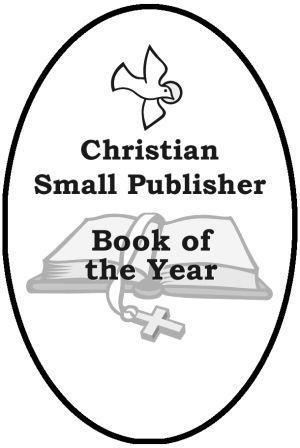 Deliver Me won this award
Deliver Me won this awardin 2012
Someone you know needs this book. Please let them know about it during the sale days. You can do so by using the share button below and the Tweetables in this message. If you find this book valuable, you can also let others know that by leaving a brief review on Amazon.
Thank you for taking the time to stop and consider the meaning of Sanctity of Human Life Sunday. There are so many walking among us who are suffering in silence because of a past abortion, giving a child for adoption, or other various results of an unplanned pregnancy. It's time to discover there really can be healing. The more than 50 true stories in this book not only show you it's possible, they show you how.
It's time. Discover your healing.
Tweetables:
It's time. Discover your healing. @DianneEButts http://ow.ly/stuiu #SOHLS Tweet this.
#Sanctity of #Human Life Sunday: Discover your healing. @DianneEButts #SOHLS http://ow.ly/stuiu Tweet this.
[image error]
Published on January 13, 2014 00:00
January 1, 2014
What You Need to Know about Book Publishers BEFORE Publishing Your Book
 MorgueFile.com Happy New Year! As 2014 begins, we look into the future with hopes and dreams. Perhaps your hope or dream is that this is the year you will publish your book. Whether this is the first time for that dream or you have dreamed that dream many years and continue to hope that this is the year, you need to know about Book Publishers, what types there are, and how they work BEFORE you publish your book. So let's talk about what you need to know about book publishers and book publishing
before
publishing your book.
MorgueFile.com Happy New Year! As 2014 begins, we look into the future with hopes and dreams. Perhaps your hope or dream is that this is the year you will publish your book. Whether this is the first time for that dream or you have dreamed that dream many years and continue to hope that this is the year, you need to know about Book Publishers, what types there are, and how they work BEFORE you publish your book. So let's talk about what you need to know about book publishers and book publishing
before
publishing your book.I've wanted to write on this topic for a long time, but it is such a big, big, big topic that it's a lot to tackle...especially in a blog post. It's hard to know where to begin. So I'm going to give some basics here, and then I'm planning to write more on this topic elsewhere. When I have that more in-depth information prepared, I'll let you know.
There are two essential things you need to know before publishing your book:
how publishing works, and the different kinds of publishers.
Here I'm giving some basic information which I hope will give you a good foundation of understanding about publishing. That foundation can then steer you in the right direction to accomplish your goals. My aim is to provide information that will:
help you make good decisions about what kind of publishing you want to get involved in so you don't come out the other end hugely disappointed (which happens to authors all the time),help you avoid the worst (getting ripped off), help you find the success you're capable of.
I get asked about publishing books all the time.
"My husband just finished writing his book and he wants to get it published. How does he get a publisher?"
"I'm working on my life-dream of writing my book. How do I get it published?"
"I want to write a book. How do I find a publisher?"
Whenever someone asks me how to publish their book or how to get their book published, the answer they need is huge. That's because publishing is not the same as it used to be.
Publishing has changed
Publishing has changed vastly in the digital age of computers and the world wide web. The thing is, unless you've been in publishing for years and know how it used to operate, there's no way you can understand how things are different.
My expertise in publishing comes from being involved in publishing for twenty-five years and from watching it evolve during that time.
Most people seem to have an idea in their head of what "publishing" means to them, and they expect everyone else who uses that word to be thinking the exact same thing. This just isn't the case. So to get our bearings, let's first take a look at what publishing used to be, and then we can understand better what it has morphed into.
The way Publishing used to be
Years ago there were basically two types of publishing:
Traditional Publishing, also known as Commercial Publishing or Mainstream Publishingand Self Publishing, also known as Vanity Publishing
Traditional Publishing
I believe "traditional publishing" is what most people think of when they want their book published. This is where a publisher wants to, and offers to, publish your book for you.
Traditional Publishers pay you an advance and, after your book sells enough copies to earn back what you have been paid in advance, the publishing company begins to pay you royalties.
A traditional publishing company takes all the financial burden of publishing your book. This includes hiring an awesome editor to take your very-good book and make it even greater, commissioning a professional to create a cover for your book, paying someone to design the interior and typeset your words, paying to copyright the work in your name, arranging for an ISBN and bar code, getting it into their catalog, and send out their sales staff to large bookstores to talk up your book and insure the stores carry it on their shelves. The traditional publisher also does a bunch of other things that need to be done that you're probably not aware of, but that's okay because they are the professionals and they know what needs to be done. And they're paying for it all.
You, as the writer, do not "hire" a traditional publisher. They "hire" (or better said: contract with) the writers they choose to publish.
Self (or Vanity) Publishing
Self Publishing is where you decide you want your book published and you set about to get that done.
You either do all the work of publishing your book yourself, or you hire people to do what you cannot or do not want to do (true "self publishing"), or you hire a company to do it for you (what I call a self-publishing company).
The big difference from traditional publishing is that you hire the people or company you need to help you publish your book. You pay all the costs. You'll also keep all the proceeds, should there be any.
Furthermore, when you self publish you can publish virtually anything.
In the old days this was called Vanity Publishing because it was believed to be done by people who couldn't get published by a traditional publisher because their work wasn't good enough. Therefore, being vain enough to only want to see their name on the cover of a book, they would hire someone to put their book together, or would do it themselves, and pay for a print run of hundreds or thousands of books. These self-published books had a reputation for being poorly written and lacking good editing, which created a lousy stigma for self- or vanity-published book. That stigma stuck for a long time. The quality of many self-published books has improved today. The stigma has lessened some, but it still lingers.
The way Publishing is Today
Traditional Publishing
Traditional Publishing remains the same as above. In order to obtain a traditional publishing contract for your book, you will need to find a publisher that publishes the type of book you are writing. Then you will need to approach them in the appropriate way, which is usually with a query letter. You can also meet publisher's representatives at writers conferences and often can "pitch" your book to them there. This "pitch" takes the place of a query letter and you may gain the opportunity to go to the next step, which is submitting a book proposal.
If the publisher is interested in your book (a very competitive long shot), they will ask to see your "book proposal." A book proposal is a very involved sales proposal with a lot of information about your book, including what it's about, an overview, an analysis of competitive titles, a brief description of each chapter (for nonfiction) or synopsis of your story (for fiction), and some sample chapters.
It's an involved document and the sale of your book to a traditional publisher depends on it. There are plenty of resources to teach you how to write a book proposal if that's what you need to do.
I always recommend an author attempt to land a traditional publisher for their book before they self publish.
Self Publishing
Self Publishing, sometimes called Independent Publishing, has morphed into many varieties of self-publishing companies and subsidy publishing.
True "self publishing" (verses self-publishing companies) means you do everything needed to put together your own book and publish it. It's as if you are remodeling your house and you act as the Genera Contractor. You line up all the people you need from the foundation to the shingles. You hire someone to do everything you either cannot do yourself or do not want to do yourself.
You will have complete control over every decision. You will take all the risks. You will pay for everything involved in publishing your book. And you will keep 100% of the proceeds. (I did not say profits because you've a long way to go to sell enough books to recoup your money before you start earning a profit, and many self-published authors never get to the profit stage.)
Thanks to today's technology, authors no longer need to pay for large print runs. Instead there is Print On Demand (POD) technology, so you can order a much small quantity of books. While they will cost more per each, you won't have the huge outlay of money for a large print run and you won't be stuck with a basement, closet, or garage full of books if they don't sell. (Be sure to see the information about required purchases under Subsidy Publishers.)
Self Publishing Companies
In recent years what I call "self publishing companies" have sprung up until there is an incredible number of these companies...all competing for your business. (And what does that tell you? That tells us there is big money to be made by these companies, and all of them want to publish your book so you they can get your money. I'm not saying they are not reputable. But there are a lot of people wanting to publish a book right now, and willing to pay for it. And many don't know this is not the traditional way to publish a book!)
These companies either help you self-publish your book or say they are publishing your book for you. But this is still self publishing because you are paying them to do so. In this case, the company you hire is acting as your General Contractor, providing or hiring the whole team you need to get your book published. And you are still paying for all the work.
Sometimes you do not pay outright for the work. Instead, the company gets paid by keeping a large portion of the proceeds to earn back the costs and hopefully make a profit too. (This looks a lot like a traditional publisher, and it can be really hard to tell the difference. I'll tell you some ways to tell the difference below.)
Sometimes these companies have you contracted with them for several years so that they are the exclusive publisher of your book, which makes business sense and also looks like a traditional publisher.
Here are just a few of the self publishing companies. Please know I'm not endorsing or recommending any of these companies. I'm just giving some examples:
Outskirts PressAuthor HouseXulon (Christian books)
If you see ads for companies in writers magazines or online saying you can publish your book through them, this is not a traditional publisher. Traditional publishers acquire books through submissions and, most often these days, through literary agents. They have more than enough books to publish. They don't need to advertise for more.
Before you decide to use any publishing company, it is vitally important that you check them out to see how others have liked working with the company. Search for information (and complaints) about them online. Absolutely check with the Better Business Bureau.
Subsidy Publishing
Subsidy Publishing usually means you are paying part of the costs and the company is paying part of the costs. These companies may also be called "cooperative publishers," "book packagers," "custom publishers," or "boutique publishers."
Sometimes you have to pay money out of your pocket. Sometimes you pay nothing out of pocket, but the company keeps a larger portion of the proceeds to recoup their costs and, hopefully, make a profit. (Sometimes the fact that you are paying the cost of publishing your book is "hidden" because there little or no cash outlay.)
Some Subsidy Publishers require authors to purchase a certain number of books. I've seen the required purchase to be as many as 5,000 copies.
Most authors don't have a clear idea of how many copies of their book will actually sell. It's hard to tell until we've done it at least once. We all want to sell thousands of books. But the reality is it's more likely you'll sell hundreds at most. Reality check: Unless you speak multiple times in a year to hundreds or thousands of people per engagement, you're not going to sell 5,000 copies of your book.
If you purchase a large quantity of books, the subsidy publisher is going to make money off of you and you will most likely be stuck with thousands of books you will never sell (or recoup your investment from, let alone make a profit).
Plus, do the math: How much money is that number of books going to cost you? Even if they are only costing you $4 or $5 each, look at what a large investment that is, money that is out of your pocket until you sell to the break-even point. And look at how much money the Subsidy Publisher is making off of you!
Small Publishers Publishing on the Traditional Model
Many publishers today state they publish using the "traditional model." This usually means that they will pay the expenses of publishing your book. You won't pay any part. (Remember, if you're paying anything at all, you are not with a traditional publisher. And sometimes when you're not paying any part of the publishing costs, you're still not with a tradition publisher.)
These publishers will pay you royalties on the sales of your book. There is usually not an advance, because the publisher is too small to have funds to offer authors advances.
Small publishers often pay a larger percentage of each sale in royalties, but there will be fewer sales because of the limitations of a small company.
One of those limitations is that the books produced by small companies will most likely not be on the shelves in brick and mortar chain bookstores because small traditional publishing companies don't have a sales staff to meet with chain store buyers and convince them to elbow over some of the big boys' books to make shelf space for this smaller company's books.
Brick and mortar stores most often can and will order your book published by a small publisher in if a customer walks in and requests it (and if the publisher has its books available through a major distributor, such an Ingram), but your book won't be on the shelf where browsers might see it, pick it up, flip through it, read a few pages and decide to buy it.
Some small publishing companies use companies like CreateSpace to publish their books. CreateSpace is part of Amazon's group of companies. Many stores won't carry CreateSpace books because Amazon is their biggest competitor and they obviously don't want to be helping their competition, plus CreateSpace doesn't allow a big enough discount for the profit margin required by larger stores.
Small publishing companies usually offer virtually no traditional marketing (ads in magazines, on radio, etc.), but many do have a variety of ways of capitalizing on internet marketing and social media.
In the end, a small traditional publisher offers authors the advantages of an increased likelihood that they will publish their books. Authors often enjoy a more personal working relationship with the publisher and won't "get lost" as they might with a large traditional publisher who might give more attention to their big name authors. Drawbacks are the limited marketing help (much of which the author is expected to do anyway, even when published by a large traditional publisher), not being on the shelves in brick and mortar stores, and no advances.
Muddying the Waters
Book publishing can get very confusing because self publishing companies and subsidy publishers now use terms that have long been used in traditional publishing. They often call themselves "traditional publishers," sending you an "acceptance letter," say they will "publish your book" for you, and pay you "royalties."
Many of these companies will also tell you that they offer "distribution." They promise they will get your book on Amazon.com, Barnes & Noble.com, and other outlets. Many new authors think this means their book will be in bookstores like Barnes & Noble.
There is a huge difference between:having your book in a Barnes & Noble store and being on BarnesandNoble.com.
The language is so close that many authors don't notice the difference...until it's too late.
You can get your own book on Amazon.com for a minimal fee (it was a one-time fee of $25 a dozen years ago when I put my first book, Dear America , on Amazon).
My self-published book, Deliver Me , is also on BarnesandNoble.com because it is distributed by Ingram (because I printed it through LightningSource.com, which is owned by Ingram). So there are ways to do this yourself. You do not need to pay anyone to do this for you. (Getting your book published as a Kindle, Nook, or other e-book is a whole different animal. But you can also do this yourself, or hire it done. Google it to learn how.)
These companies have muddied the water by using the same terminology as true traditional publishers. We're using the same words but we're not speaking the same language. This is why you have to get savvy before publishing your book!
As if all this hasn't muddied the waters enough, you also need to be aware of a newer entry to publishing in recent years. That is, self-publishing companies that are owned by either larger traditional companies or big name authors or other organizations. Two examples are:
Thomas Nelson (a traditional Christian publishing company) owns the self- or subsidy-publishing company WestBow Press.Author Jerry Jenkins, owner of the Christian Writers Guild, opened a company formerly called Christian Writers Guild Publishing. That company has now merged with Bethany Press (not the same as the large traditional Christian publisher, Bethany House), Believers Press and more to form what is now called 1Source.
Being published by WestBow Press is not the same as being published by the traditional publisher Thomas Nelson, which owns WestBow. (For more on this you may want to read literary agent Chip MacGregor's blog post "Thomas Nelson and Self-Publishing" and "Responding to Self-Publishing." )
See how confusing this can get? This is why you need to know what you're doing and who you're working with before you publish your book.
An AnalogyIn order to communicate to you the difference between Traditional Publishing and all other types of publishing, let's say instead of publishing a book, your big dream has always been to play baseball.
You've learned to play and you're fairly good at it. But there are only so many spots available on all the Major League teams combined, and there's a ton of really stiff competition because lots of other people want to win one of the relatively few spots available on a major league team, too. So you try out.
What happens if you do win a place on a Major League Baseball team's roster? Congratulations! You get to play with the big boys! More than that, you get to play in front of a huge audience. Your name will be announced by the game announcers and people will hear your name and get to know your name and will get to see you play. You'll get to play in the big baseball stadiums all around America. You've made it to the big times!
But what if you don't win one of those relatively few spots on a Major League team?
Well, you have some choices. You can continue to try, and thank goodness in publishing, unlike baseball, age and gender don't matter. The playing field is pretty level and you can keep trying to win a spot with the big boys as long as you breathe. But you also can make some other moves.
You can play baseball on other teams, in other leagues, and on other fields. You can join a team in a city league. There's still some competition but there are enough teams that you can probably find one that will let you play. Or you can form your own team, or even your own league if you have the resources to do that. And then you play all you want.
You might be playing because you love the game and you're out to have fun. Or you might be taking it all more seriously than just having fun. But the point is, if you want to play baseball badly enough, and if you can't win a spot on a Major League team, then there are still some things you can do to make your dream of playing baseball come true.
Even so, there are obviously some really big differences between playing in your local league and playing for the Major Leagues:
You won't be paid as much as a major league playerChances are you won't get paid much at all, if anything. And chances are even better that you're going to have to fork out some money because you're going to be paying your own way and paying for all your equipment, your travel expenses, etc.You won't be playing in the big stadiums, unless you can make some kind of special arrangement for a special event. (Think stadium = brick and mortar stores here.)While you may be playing for fun or for fulfillment or even to make a bit of money or for another reason, there are people who will never see you as a "real" baseball player because you're not in the Major Leagues.I think you can see the similarities between the baseball analogy and publishing.
How can you tell which League a Publisher is in?You probably know names of some of the large, long-existing truly-traditional publishers, such as Simon and Schuster, Random House, Bantam, Dell, Double Day, and Putnam.
In the arena of Christian book publishing, names of big traditional publishers include Thomas Nelson, Zondervan, and Bethany House.
But if you can't tell by the name, how do you tell whether a publisher is a traditional publisher or not? Here are some hints:
Walk into any brick and mortar chain bookstore such as Barnes & Noble, and the books on their shelves will most likely be from traditional publishers. Looking to see if a particular book or publisher is carried by Amazon.com does you no good at all because Amazon, God bless them, will carry just about anybody's book.
In the Christian book publishing arena, Christianbook.com pretty much carries only books from the large traditional publishers. They do not carry self-published books nor even many smaller publishers.
ConclusionsI hope this information has been, and will be, helpful to you as you seek publication for your book. I know it can be complicated and confusing, which is why I want to write more on this topic via another venue. I'm working on that now and will let you know when it's ready.
Before you publish your book, be sure to ask good questions, including:
How is this company making their money? Off of you? Or off of selling copies of your book?Are this company's books sold in brick and mortar chain bookstores? (Independent stores have the decision making and bookkeeping to carry anything, including self-published books.)Are you required to purchase books?Are you required to pay any part of the publishing costs?What will the company really do for you? Can you do it yourself for much less?
These questions will help you determine what type of publishing company you're looking into, and what your publishing experience will look like when it's done.
Educate yourself about publishing. Know what your getting into. Discover all your options, and chose the best one for you. Learn what you need to know about book publishers and book publishing before publishing your book. Then when it's done, you won't be disappointed and you'll be able to create your own success.
Tweetables:
How do I publish my book? http://ow.ly/s9MJF @DianneEButts Tweet this
How do I get my book published? http://ow.ly/s9MJF @DianneEButts Tweet this
NEXT MONTH: I feel we've been neglecting beginning writers and have been talking about book publishing a lot. So next month we'll talk about the basics of how to get started in publishing, whether you want to write for magazines or books.
[image error]
Published on January 01, 2014 03:00
December 13, 2013
"A Ruby Christmas" - Read the Final Chapters Now!
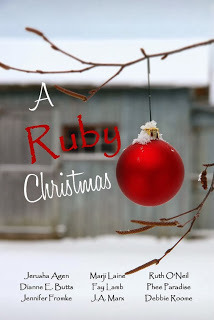 A Ruby ChristmasRead the Final Chapters!
A Ruby ChristmasRead the Final Chapters! Good news! Now you can read the rest of the story...all at once!
Today the entire book releases on Kindle and is free!
Find A Ruby Christmas on Amazon for Kindle.
Don't have a Kindle reader? No problem. Your computer or other device can become your Kindle reader. I've put the links below.
Get the whole book for free!The entire story, A Ruby Christmas, is now available exclusively on Amazon's Kindle and will be free on Kindle from today through December 16th.
For the link go to www.WriteIntegrity.blogspot.com.
Altered Photo contest ends today. Be sure to turn in your answers to be entered in the contest. See the above linked site for details.
More about A Ruby Christmas:
Today publisher of A Ruby Christmas, Tracy Ruckman, guest posts on Phee Paradise's Delighted Meditations.
On Sunday December 15th Jerusha Agen will guest post on Thinking Thoughts blog.
Make your device a Kindle Reader:Don't have a Kindle? No problem. You can get the free program to make your computer a Kindle reader. Here are the links to do that. The program is direct from Amazon and therefore should be safe to download:
Free Kindle for PC download.Free Kindle for Mac download.Free Kindle for iPad download.
If you're reading this after December 16th, 2012, the book will be just $ .99 for the rest of the month. It will also be available on Amazon after the end of December.
Find A Ruby Christmas on Amazon for Kindle.
Wishing you A Ruby Christmas
We hope you have enjoyed A Ruby Christmas. If you have, please feel free to leave a review on Amazon so others will know you enjoyed Ruby's story.
And don't forget to share A Ruby Christmas with your friends and contacts. You can use the Tweetables and share buttons below.
Wishing you a very Merry Christmas!
Tweetables:Wishing you A Ruby Christmas: Read the final chapters now! http://ow.ly/rb9DQ @DianneEButts #ARubyChristmas #PNP #WIP Tweet It!
Just released! Final Chapters: A Ruby Christmas. Available now! http://ow.ly/rb9DQ @DianneEButts #ARubyChristmas #PNP #WIP #FreeKindle Tweet It!
Related article:Wishing You A Ruby Christmas on the Butts About Writing blog.
[image error]
Published on December 13, 2013 03:00
December 12, 2013
"A Ruby Christmas" - Chapter 9 by Phee Paradise
 Guatemala
Guatemala
Photo courtesy of Phee Paradise Today's featured author is Phee Paradise.
Phee won her place in the book through the competition held earlier this year. She contributed Chapter 9, and takes Ruby and Yippee all the way to Guatemala!
Phee was born in Guatemala City. She now lives in South Carolina.
 Guatemala
Guatemala
Photo courtesy of Phee ParadiseYou can connect with Phee:
On Facebook: https://www.facebook.com/phee.paradise
And reader her devotions on her blog at
And she blogs at: Delighted Meditations
Read Phee's chapter of A Ruby Christmas here:
A Ruby Christmas: chapter 9
View the Altered Photo on Phee Paradise's Delighted Meditations blog.
Compare to the photo her and write down the different: A Ruby Christmas Pinterest Photo Contest
More about A Ruby Christmas:Phee Paradise's Delighted Meditations: La Posada
J.A. Marx's Embattled Spirit.
Marji Laine's Chapter 9 Devotion on Faith-Driven Fiction.
 A Ruby ChristmasWishing you A Ruby Christmas
A Ruby ChristmasWishing you A Ruby Christmas
Please stop back by here tomorrow to meet the next author and for a link to the next chapter.
Please share A Ruby Christmas with your friends and contacts. You can use the Tweetables and share buttons below.
Wishing you a very Merry Christmas!
Tweetables:Wishing you A Ruby Christmas: Read Chapter 9 now! http://ow.ly/rb9pk @DianneEButts #ARubyChristmas #PNP #WIP Click to Tweet
Just released! Chapter 9: A Ruby Christmas. Check it out now! http://ow.ly/rb9pk @DianneEButts #ARubyChristmas #PNP #WIP Click to Tweet
Related article:Wishing You A Ruby Christmas on the Butts About Writing blog.
[image error]
 Guatemala
GuatemalaPhoto courtesy of Phee Paradise Today's featured author is Phee Paradise.
Phee won her place in the book through the competition held earlier this year. She contributed Chapter 9, and takes Ruby and Yippee all the way to Guatemala!
Phee was born in Guatemala City. She now lives in South Carolina.
 Guatemala
GuatemalaPhoto courtesy of Phee ParadiseYou can connect with Phee:
On Facebook: https://www.facebook.com/phee.paradise
And reader her devotions on her blog at
And she blogs at: Delighted Meditations
Read Phee's chapter of A Ruby Christmas here:
A Ruby Christmas: chapter 9
View the Altered Photo on Phee Paradise's Delighted Meditations blog.
Compare to the photo her and write down the different: A Ruby Christmas Pinterest Photo Contest
More about A Ruby Christmas:Phee Paradise's Delighted Meditations: La Posada
J.A. Marx's Embattled Spirit.
Marji Laine's Chapter 9 Devotion on Faith-Driven Fiction.
 A Ruby ChristmasWishing you A Ruby Christmas
A Ruby ChristmasWishing you A Ruby ChristmasPlease stop back by here tomorrow to meet the next author and for a link to the next chapter.
Please share A Ruby Christmas with your friends and contacts. You can use the Tweetables and share buttons below.
Wishing you a very Merry Christmas!
Tweetables:Wishing you A Ruby Christmas: Read Chapter 9 now! http://ow.ly/rb9pk @DianneEButts #ARubyChristmas #PNP #WIP Click to Tweet
Just released! Chapter 9: A Ruby Christmas. Check it out now! http://ow.ly/rb9pk @DianneEButts #ARubyChristmas #PNP #WIP Click to Tweet
Related article:Wishing You A Ruby Christmas on the Butts About Writing blog.
[image error]
Published on December 12, 2013 03:00
December 11, 2013
"A Ruby Christmas" - Chapter 8 by Debbie Roome
 Capetown, South Africa
Capetown, South AfricaPhoto courtesy of Debbie RoomeToday's featured author is Debbie Roome.
In Chapter 8, Debbie takes Ruby and Yippee to Capetown, South Africa!
Debbie was born in Zimbabwe, then lived in South Africa for fifteen years before moving to New Zealand. Debbie is the author of Contagious Hope and Loving Lena, a book about here sister. She also contributed to last year's project, A Christmas Tree Treasure Hunt.
Read Debbie's chapter of A Ruby Christmas here:
A Ruby Christmas: chapter 8
View the Altered Photo on Debbie Roome's blog.
Compare to the photo her and write down the different: A Ruby Christmas Pinterest Photo Contest
More about A Ruby Christmas: Marji Laine's Chapter 8 Devotion on Faith-Driven Fiction.Phee Paradise's Delighted Meditations: Babies at Christmas
 A Ruby Christmas
A Ruby ChristmasWishing you A Ruby Christmas
Please stop back by here tomorrow to meet the next author and for a link to the next chapter.
Please share A Ruby Christmas with your friends and contacts. You can use the Tweetables and share buttons below.
Wishing you a very Merry Christmas!
Last year's collaborative novel:
Debbie also took part in the collaborative novel from Christmas 2012 from Write Integrity Press, A Christmas Tree Treasure Hunt .
Tweetables:
Wishing you A Ruby Christmas: Read Chapter 8 now: http://ow.ly/rb9gO @DianneEButts A#RubyChristmas #PNP #WIP Tweet this!
Released today! Chapter 8: A Ruby Christmas. Check it out now! http://ow.ly/rb9gO @DianneEButts A #RubyChristmas #PNP #WIP Tweet this!
Related article:Wishing You A Ruby Christmas on the Butts About Writing blog.
[image error]
Published on December 11, 2013 03:00



